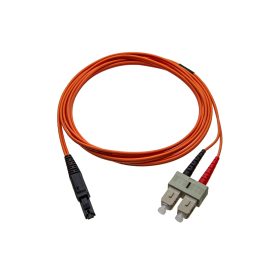
Slim, Light, and Fast
Slim, Light, and Fast
Today, fiber optic cables are used for many different telecommunication applications and data center. Their long-distance capabilities, light weight, and large bandwidth get more and more users attraction to use them. Fiber optic cables are also seeing much growth in private networks—data centers, data warehouses, server farms, SANs, and LANs. Here the demand is not so much for fiber's unique distance capabilities, but for its unmatched bandwidth.
Advantages of Fiber
1. LONG DISTANCE SIGNAL TRANSMISSION
Fiber has the low attenuation and superior signal integrity, allow much longer distance of signal transmission. it is very usual for fiber optic systems to span over 100 km with no active or passive processing.
2. LARGE BANDWIDTH, LIGHTWEIGHT, AND SMALL DIAMETER
While today's applications require an ever-increasing amount of bandwidth, it is important to consider the space constraints on many end users. It is commonplace to install new cabling within existing duct systems. The relatively small diameter and light weight of fiber cables make such installations easy in these kind of environments.
3. EASY INSTALLATION
Long lengths make fiber optic cable installation much easier and less expensive. Optical cables can typically be installed in duct systems in spans of 6,000 meters or more depending on the duct's condition, layout of the duct system and installation technique. The longer cables can be coiled at an intermediate point and pulled further into the duct system as necessary.
4. NO EMI EFFECT
Another advantage of fiber cables is their dielectric nature. Since fiber has no metallic components, it can be installed in areas with electromagnetic interference (EMI), including radio frequency interference (RFI). Areas with high EMI include utility lines, power-carrying lines and railroad tracks. All dielectric cables are also ideal for areas of high lightning strike incidence.
5. SECURITY
The dielectric nature of optical fiber won’t be remotely detected by the signal being transmitted within the cable. The only way to do so is by actually accessing the fiber optic cable itself. These circumstances make fiber extremely attractive for use in governmental institutions, finance/banking and other environments with major security concerns.








